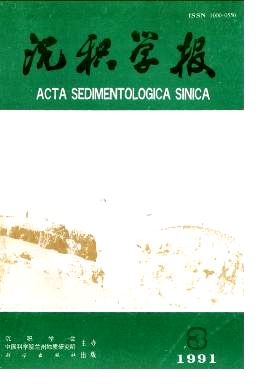Sedimentology of Gravelly Alluvial Fans on the Western Margin of Late Triassic, Ordos Basin
- Received Date: 1989-02-28
- Publish Date: 1991-09-10
Abstract: The alluvial fans on the western margin of Late Triassic Ordos Basin can be divided into three parts; upper, middle and lower. Upper fans mainly consist of conglomerates which genetically include debris flow, grain flow, sheetflood flow, mud flow and braided stream deposits. Debris flow deposits are mainly composed of clasts. Most of the conglomerates are matrix supported and poorly sorted. With the increase of distance from source area to depositional sites, maximum clast size are reduced, differences among clast size are minimized, ratio of clast to matrix are increased and the rocks are changed gradually from matrix supported to clast supported. Grain flow deposits are identified by their matrix lacking of features. Clasts in these deposits were cemented by iron-oxides, clay minerals or other materials which had precipitated around clasts as thin film through the processes of diagenesis. Sheetflood flow deposits occur as thinly bedded sandstones or gravelly sandstones. And most of their thickness are about tens of centimeters. Braided stream conglomerates are typical for cross beddings and scours on their bases. Mud flow deposits are characterized by a small percentage of clasts and a large percentage of mud. Long axes of some clasts in mud flow deposits may be perpendicular to beddings. Distribution frequency curves of clast size of the conglomerates mentioned above can be classified obviously into three groups, which are correspondent to debris or grain flow, braided stream and sheedflood flow deposits respectively. Curves for debris or grain flow deposits are characterized by multiple peaks showing lack of sorting. Curves of braided stream conglomerates possess a peak near the finest end and gently wave in coarse part, showing poor sorting. Curves of sheetflood flow deposits rise from coarsest end to finest end monotonously, representing quick waning down of the flood. In addition to the shape differences of the curves, the Maximum Distribution Frequency (Mdf) and the Respondent Gravel Size (Rgs) for each of the three deposits are also different. For debris or grain flow deposits, mean Mdf, Rgs and Mdf/ Rgs are 20. 1.5 and 13 respectively, for braided steam ones, they are 30. 1.2 and 23 and for sheetflood flow ones 38. 0.7 and 54. These parameters have their genetic significance. The lower of the values of Mds / Rgs, the higher cohesiveness or transportation energy the flow would have. The authors believe that it is very hopeful to use these curve patterns and parameters as tools in identifying environments of gravelly alluvial fan deposits.
| Citation: | Ke Baojia, Chen Changming, Chen Zhiming, Wang Shousong, Jiang Haoren, Hui Binyao. Sedimentology of Gravelly Alluvial Fans on the Western Margin of Late Triassic, Ordos Basin[J]. Acta Sedimentologica Sinica, 1991, 9(3): 11-21. |






 DownLoad:
DownLoad: